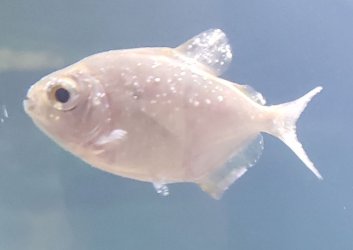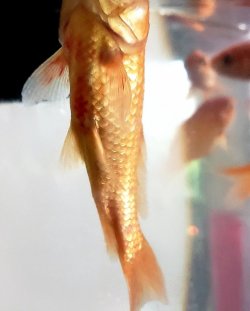Please help! I have two 54 gallon freshwater tanks that I am really struggling with. Have had the tanks for a month, added new fish to both tanks a week ago.
Tank one: 7 guppies, 2 silver dollars, 1 betta, 1 pleco
PH 7.0
Ammonia 0
Nitrite 0
Nitrate 0
Tank two: 3 goldfish originally, added 5 bala sharks, 1 pleco
PH 7.4
Ammonia 0
Nitrites 0
Nitrates 0
Tank one, day 3. The guppies were fine the first 3 days, then suddenly all but 1 died in a 10 hour period. I tested the water, PH had dropped to 6.0, I added a regulator to raise it, meanwhile dropped the remaining female into the other tank in desperation. Day 4, noticed ich on silver dollars. Pleco, who had seemed fine the night before was dead. Treated for 3 days, noticed improvement, 25% water change on 3rd day of treatment. Betta seems unaffected, silver dollars may be improving.
Tank 2: Goldfish were introduced the week after tank setup. They were extremely healthy for the week before adding new fish. Day 2 after introducing new fish, pleco is dead. Day 4 noticed ich on goldfish. Bala sharks seem fine. Treated for 3 days. On 4th day after starting treatment but before treating that day, biggest bala shark was dead. Did 25% water change and treated again. This morning 2 more sharks dead and apparently another one committed suicide because I caught my puppy eating it.
So now out of 20 fish in 2 separate tanks, I have 8 left. The water tests consistent and the ich seems to be improving on the fish affected by it. I have kept aquariums since I was 6 years old and I have never had anything like this happen.
Suggestions?
Tank one: 7 guppies, 2 silver dollars, 1 betta, 1 pleco
PH 7.0
Ammonia 0
Nitrite 0
Nitrate 0
Tank two: 3 goldfish originally, added 5 bala sharks, 1 pleco
PH 7.4
Ammonia 0
Nitrites 0
Nitrates 0
Tank one, day 3. The guppies were fine the first 3 days, then suddenly all but 1 died in a 10 hour period. I tested the water, PH had dropped to 6.0, I added a regulator to raise it, meanwhile dropped the remaining female into the other tank in desperation. Day 4, noticed ich on silver dollars. Pleco, who had seemed fine the night before was dead. Treated for 3 days, noticed improvement, 25% water change on 3rd day of treatment. Betta seems unaffected, silver dollars may be improving.
Tank 2: Goldfish were introduced the week after tank setup. They were extremely healthy for the week before adding new fish. Day 2 after introducing new fish, pleco is dead. Day 4 noticed ich on goldfish. Bala sharks seem fine. Treated for 3 days. On 4th day after starting treatment but before treating that day, biggest bala shark was dead. Did 25% water change and treated again. This morning 2 more sharks dead and apparently another one committed suicide because I caught my puppy eating it.
So now out of 20 fish in 2 separate tanks, I have 8 left. The water tests consistent and the ich seems to be improving on the fish affected by it. I have kept aquariums since I was 6 years old and I have never had anything like this happen.
Suggestions?



